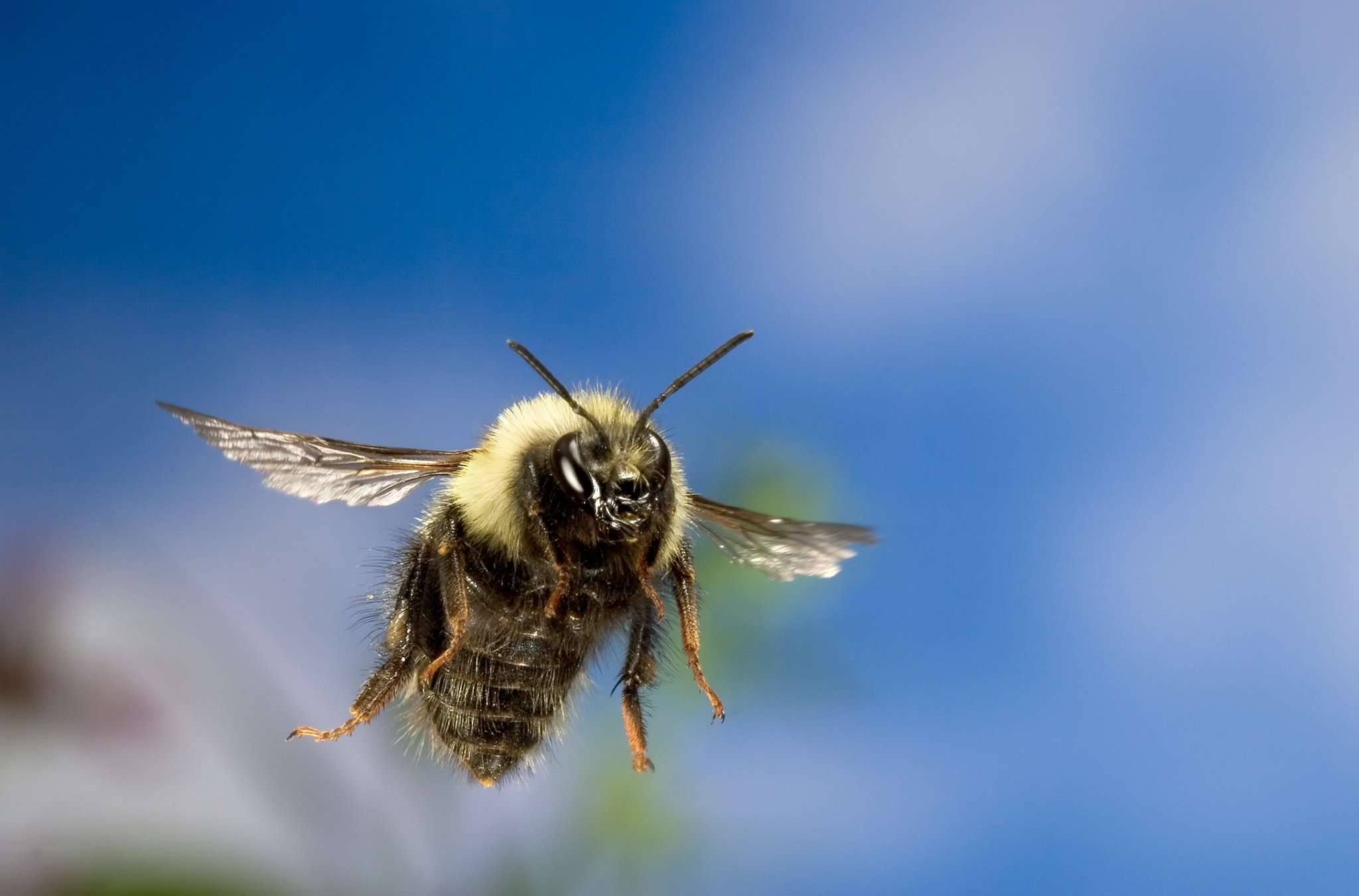Talk about a high-altitude buzz. Bumblebees may be capable of scaling Earth’s tallest peaks, flying higher than Mount Everest, according to new research.
It’s difficult for most insects and birds to fly at extremely high altitudes where the air is thin and oxygen is scarce. Flapping wings push against the air to generate lift, and the thinner the air, the less force those wings can produce.
Yet bumblebees are abundant in high alpine regions. Researchers have long wondered how these tiny flyers were able to navigate the challenges of high-altitude flight—and just how high bumblebees could go. (See intimate portraits of bees.)
“We wondered if these challenges—the reduced air density and oxygen—would limit how high bees can fly,” said Michael Dillon, a scientist at the University of Wyoming in Laramie who recently spent time with colleagues capturing bumblebees at 10,660 feet (3,250 meters) above sea level in China.
“The answer seems to be a resounding no,” he said. “They’re capable of flying very, very high.”
Dillon and his team of researchers found that the bees they collected could fly at air pressure equivalents exceeding 24,275 feet (7,400 meters) above sea level, equivalent to some of the lower peaks in Nepal’s Annapurna mountain range. Two bumblebees were able to fly at more than 29,525 feet (9,000 meters)—higher than Mount Everest.
“We were shocked at how high they could fly,” Dillon said.
Dillon, an assistant professor of zoology and physiology, and his team collected bees from the mountains of China’s Sichuan Province (map), a region with one of the world’s highest diversity of bumblebee species. (See also “Bumblebees Taking a Nosedive in North America.”)
“As humans, we’re cold, we’re having trouble breathing, and we’re having to run around with nets to catch these bees that are zipping around as if it was nothing,” Dillon said, recounting the experience.
But capturing and testing the bees at high altitudes, he added, “was the only way that we could do these studies.” Once bees are captured and held for a while, they stop flying and simply wait to be released. So it was important to get them into a flight chamber immediately to conduct the experiments.
The researchers placed their bees in a plexiglass flight chamber in the field and used a hand pump to progressively pull air out of the chamber to generate the reduced air pressures the bees would face at high altitudes.
Dillon and colleagues kept thinning the air—which simulated increasing altitudes—until the bees were no longer able to fly.
The highest that researchers had previously found bumblebees was around 18,370 feet (5,600 meters) above sea level. As a result, on their first trip to the mountains, Dillon and colleagues underestimated the strength of the plexiglass they would need for the flight chambers.
As they reduced the pressure in the chambers, the plexiglass kept breaking before the bumblebees stopped flying, Dillon said. So they returned with newly built, thicker flight chambers.
The bumblebees adapted to the thin air at high altitudes not by beating their wings faster, but by swinging their wings through a wider arc, Dillon said. “They bring their wings closer up towards their nose, and farther back towards the tip of their abdomen,” he said.
Dillon thinks this helps the bumblebees displace more air, generating enough lift to keep them aloft at high altitudes.
The two highest fliers had the most muscle mass relative to their bodies, compared with the others, which may have allowed them to swing their wings wider. “You can think of them as these really bulked-up bees,” Dillon said.
He and collaborator Robert Dudley at the University of California, Berkeley, reported their results in a study published February 4 in the journal Biology Letters.
Despite their impressive flight capabilities, bumblebees have no reason to venture to the top of Mount Everest, since there are no flowers at such high altitudes. So why would they need such wing power ?
“They could use that excess flight capacity for some other really cool flight behaviors,” Dillon said, like transporting double their body weight in nectar and pollen. The extra flying ability could also come in handy when they need to escape predators, he added.
Next, Dillon plans to investigate another bumblebee behavior—how they’re able to breathe and deliver oxygen to their tissues at such high altitudes.
“They’re flying where there’s roughly a quarter of the oxygen at sea level,” he said. “So the oxygen supply is low and their metabolic rates are about a hundred times yours or mine.”

New_L on June 24th, 2018 at 13:52 UTC »
Spacebees
Spacebees 2: Terriflying
Spac3b33s: Stingle and ready to mingle
Spacebees 4: Honey I Shrunk the Larvae
Reverend_James on June 24th, 2018 at 13:24 UTC »
That's because bees don't really fly, the just beat the air into submission.
lennyflank on June 24th, 2018 at 12:56 UTC »
Geese routinely fly over Mt Everest during their migrations.